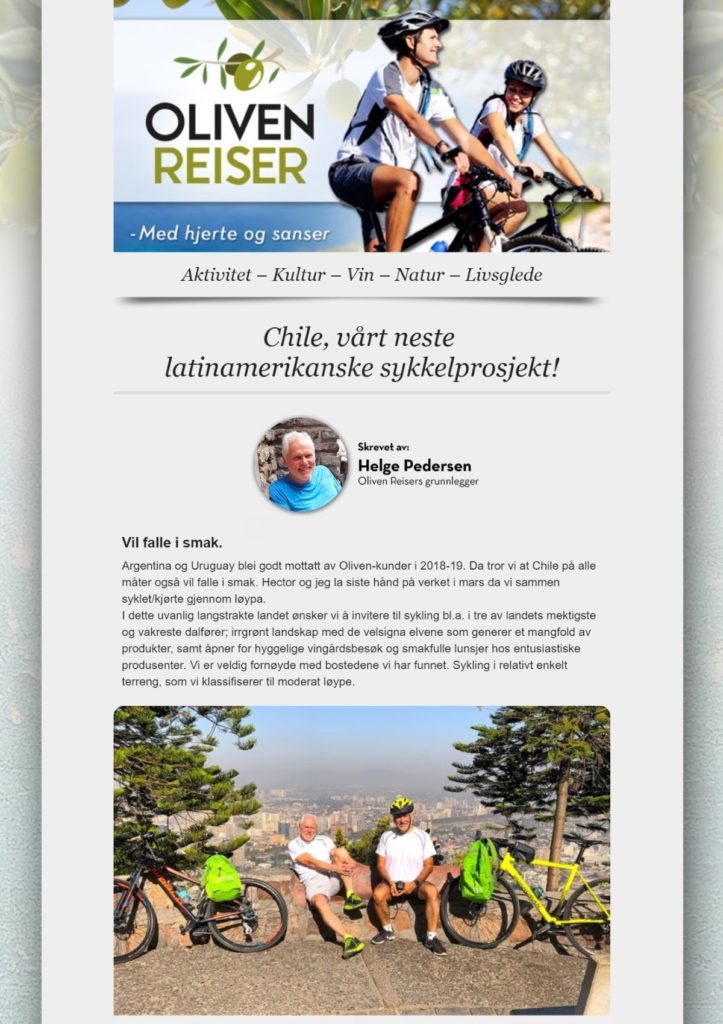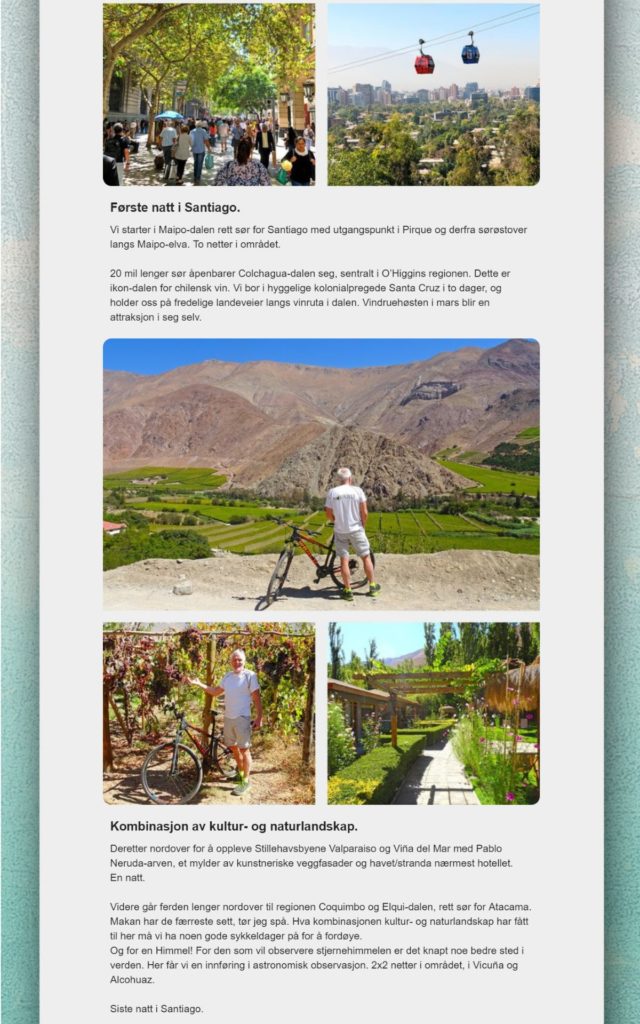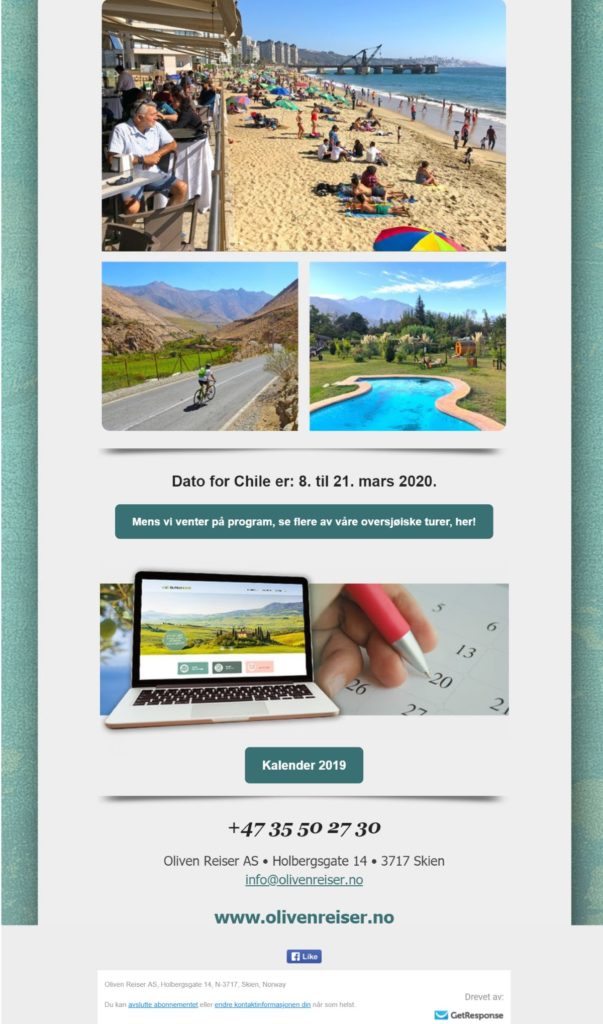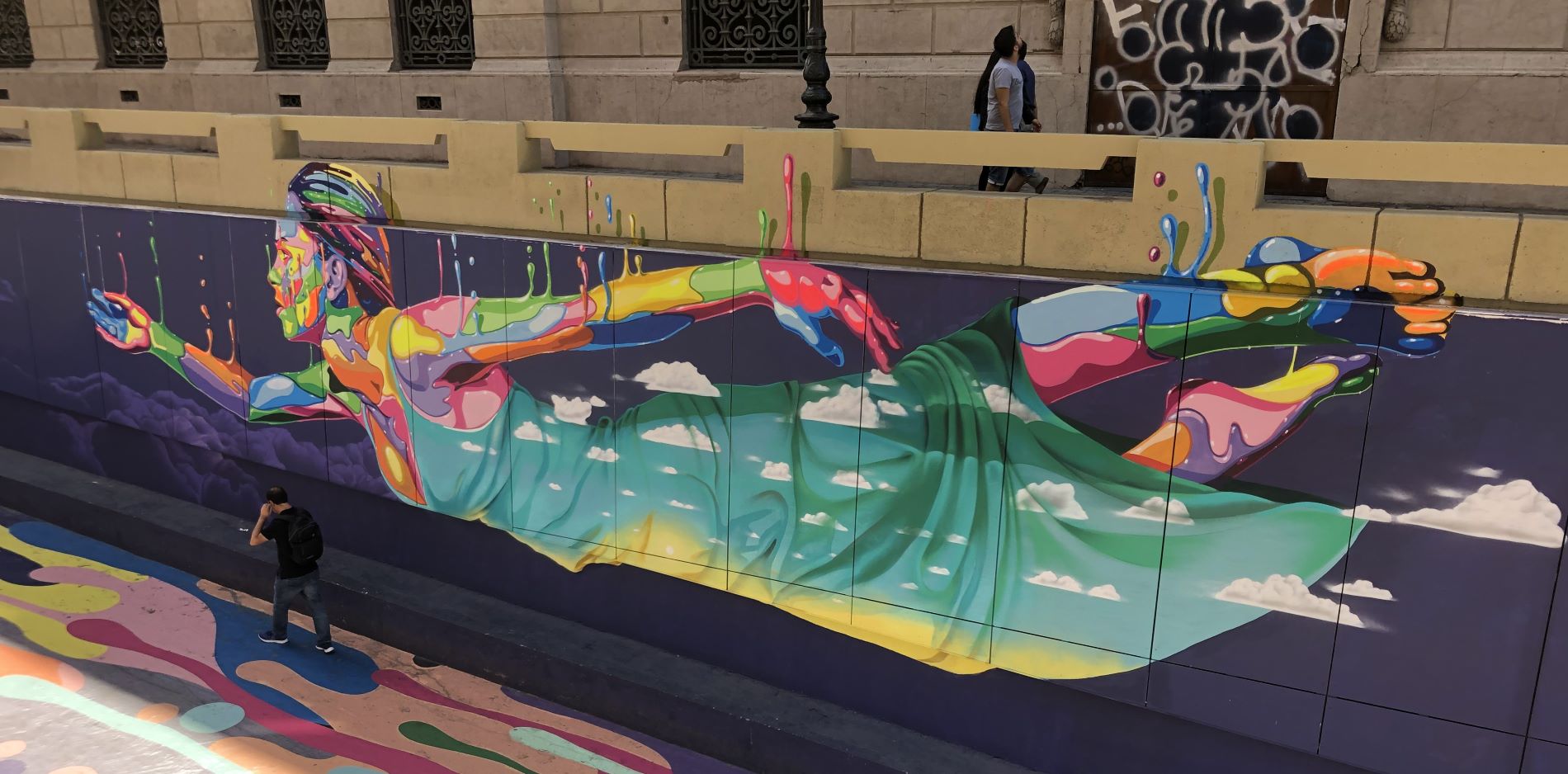Oliven Reiser has now announced the first date for its Chilean route, developed by Cycly. The announcement was made on Oliven Reiser’s newsletter, in an article written by its founder, Helge Pedersen. Here is the translation from Norwegian:
“Chile, our new cycling project in Latin America!
It will be to your liking.
Argentina and Uruguay were well received by Oliven Reiser customers in 2018-19. We believe that Chile, too, in every aspect, will be a success. Hector and I made the final adjustments to the route in March, when we drove or pedalled the track.
We would like to invite you to this exceptionally long country, to cycle through three mighty and scenic valleys. A lush landscape blessed by the fertile lowlands, which provide a wealth of products, while enabling visits to the vineyards and delicious lunches with enthusiastic local producers. We are very pleased with the accommodations we found. We will cycle through relatively easy terrain, which we have classified as a moderate route.
First night in Santiago
We will begin our journey in the Maipo Valley, south of Santiago, starting at Pirque and then moving southeast along the Maipo River. We will spend two nights in the area.
The Colchagua Valley, in the heart of the O’Higgins region, reveals itself 200 kilometers to the south. It is an iconic valley for Chilean winemaking. We will stay in the colonial city of Santa Cruz for two days, riding along peaceful rural roads on the wine route. The grape harvest, which takes place in March, is an attraction in itself.
Combination of cultural and natural landscape
We will then travel north to visit the cities of Valparaíso and Viña del Mar, on the shores of the Pacific Ocean. We will witness the legacy of Pablo Neruda and a myriad of artistic murals on the facades, and stay in a hotel by the sea. One night.
Then we will travel north to the region of Coquimbo and the Elqui Valley, on the southern edge of the Atacama Desert. Few have seen anything like it, I dare say. We will certainly need a few good days on the bike to process the impressions.
And what a sky! For those who want to observe the night firmament, there is practically no better place in the world. We will get an introduction to astronomical observation. Four nights in the area, in Vicuña and Alcohuaz, respectively.
Last night in Santiago.
Date of travel to Chile: March 8 to 21, 2020
By Helge Pedersen, founder, Oliven Reiser AS. “
I was delighted to read Helge’s description on the company newsletter. When we were travelling through the slope, as part of his inspection, he would sometimes stop to have a good look at spots of particular natural beauty and write a note. Somewhere in the Elqui Valley, after contemplating the colossal mountains against the blue skies, the green fields and clear rivers, he told me: “You know, I’ve been all around the world, but I have seen few places this beautiful”. I made this short video while cycling with Helge in Diaguitas, in the lower part of the Elqui Valley. And here is a 2-minute professional video production. You will get the idea!
March 8th 2020 will indeed be a fantastic day for me, when I welcome the Norwegian cyclists as tour leader for the group. Here you can see the full tour description. Looking forward to it!
Screen captures of the newsletter:







